#fukunami
Note
Could you quote some jikata geiko in Gion Kobu who were maiko in recent time? Only Mameyoshi and Fukunami come to my mind.
Fukunami, like Yoshimame, was a natori tachikata dancer before she turned to music full time, so I'm not too sure if that counts or not. Otherwise, there haven't been any ^^
10 notes
·
View notes
Text
Results of March
Books:
1. "Structure and Meaning: Literary Theory for Everyone" by Igor Sukhikh |25|
2. "Life Is a Dream" by Pedro Calderón de la Barca |26|
3. "Master of the Day of Judgment" by Leo Perutz |28|

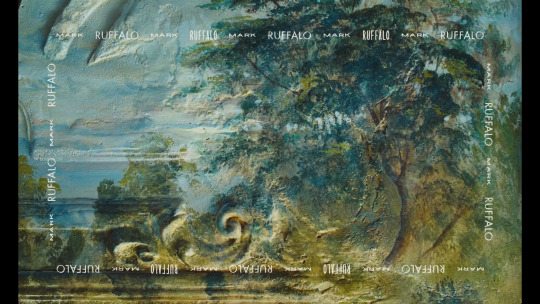
Cinema:
1. "Oppenheimer" by Christopher Nolan |3|
2. "Killers of Flower Moon" by Martin Scorsese |4|
3. "Poor Things" by Yorgos Lanthimos |7|
4. "Anatomy of a Fall" by Justine Triet |8|
5. "The Zone of Interest" by Jonathan Glazer |9|
6. "Drean Scenario" by Kristoffer Borgli |10|
7. "Middonaito" by Takashi Miike |15|

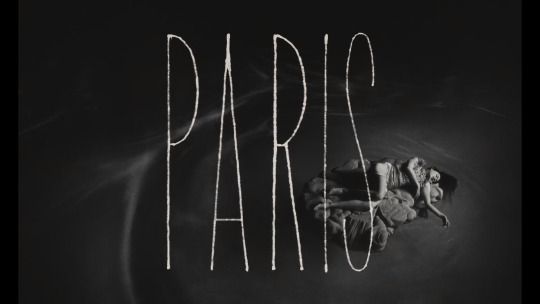
Manga and Comics:
1. "Edgar Allan Poe's Snifter of Terror" |17|
2. "Shuusaku "Aki no Mado"" by Yuko Fukunami |26|
3. "The Taming of the Shrew" by Hera |22|
youtube
0 notes
Text
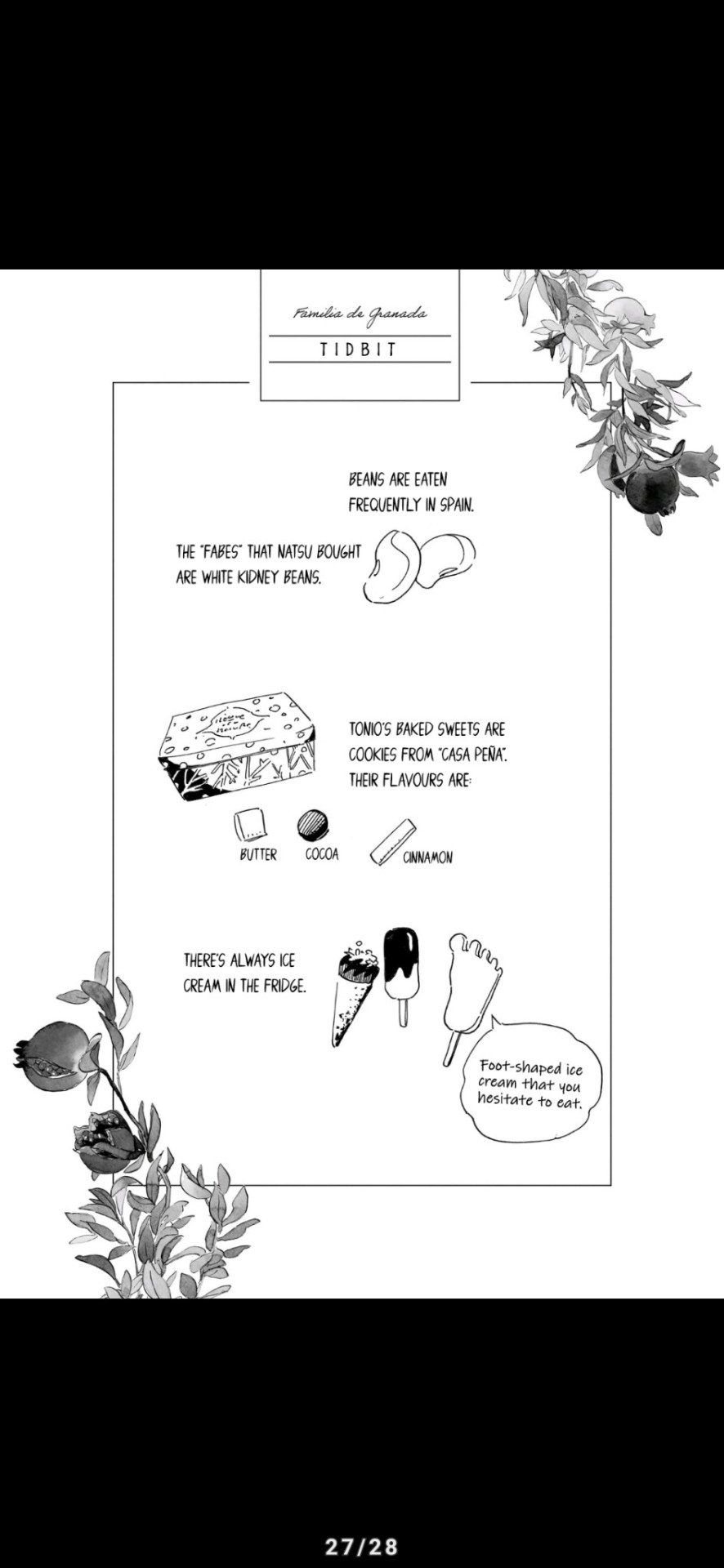
I found a manga about a boy who moves to Spain with his aunt and it mentions our beloved foot-shaped ice cream el Frigopie.
I've only been able to find a single volume, idk if there's more.
It's called Akanesasu Zakuro no Miyako, by Fukunami Yuko.
0 notes
Text
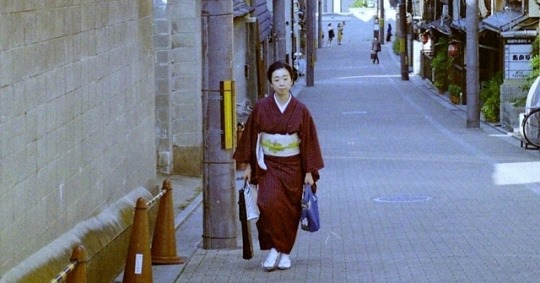
January 2019: Jikata Geiko Fukunami (Minoya Okiya) of Gion Kobu on her way to an engagement.
Other than most Jikata Geiko in Gion Kobu, Fukunami debuted as a Maiko in 1990 and switched to being a Jikata shortly after becoming a Geiko in 1995. She has been active for a total of 29 years, is around 44 years old right now and became a natori Geiko years ago.
Source: luciagq on Instagram
#fukunami#minoya okiya#gion kobu#kimono#houmongi kimono#houmongi#kosode#obi#obiage#obijime#yoohatsu hairstyle#yoohatsu#hairstyle#hair#yohatsu hairstyle#yohatsu#geisha#geiko#geigi#jikata geiko#maiko#nihongami#tomesode
58 notes
·
View notes
Photo
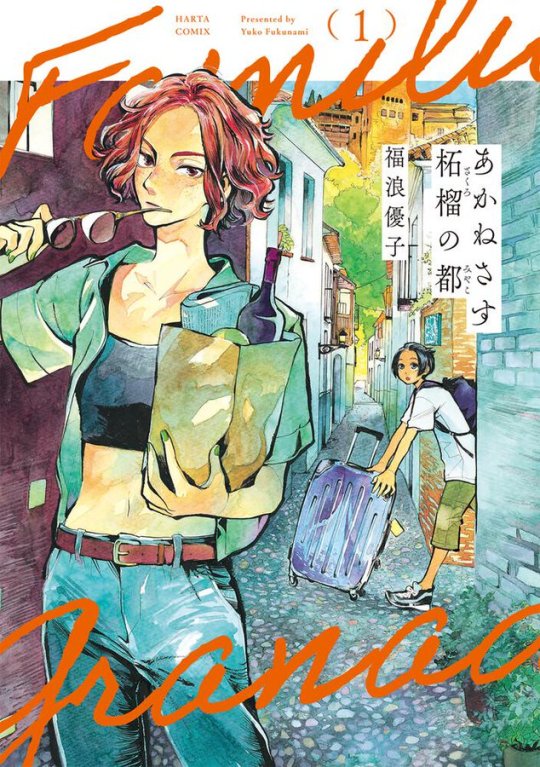
Akanesasu Zakuro no Miyako Vol.1
21 notes
·
View notes
Text



Akanesasu Zakuro no Miyako[あかねさす柘榴の都]: "Miyako of [the] Glowing-Dark-Red Pomegranate*"
aka Familia de la Granada: "Family of The Pomegranate"
*alternatively, "Glowing-Dark-Red, Miyako of [the] Pomegranate"(?)
4 notes
·
View notes
Photo



1-Geiko Fukunami dancing (Source: http://johnpaulfoster.com/blog/tag/gion-kobu/page/4/ )
2-Geiko Satomi (retired), she is charming *-* (Source: http://johnpaulfoster.com/blog/2012/11/the-geisha-satomi-at-a-gion-shrine/ )
3- Maiko Mamechiho (retired), wonderful kimono! (Source: http://fuyou-hime.deviantart.com/art/Geisha-133086780 )
6 notes
·
View notes
Photo

Kyo Odori: Fukunami. Text and image via mboogiedown-japan blog. 2007, Kyoto, Japan
127 notes
·
View notes
Photo
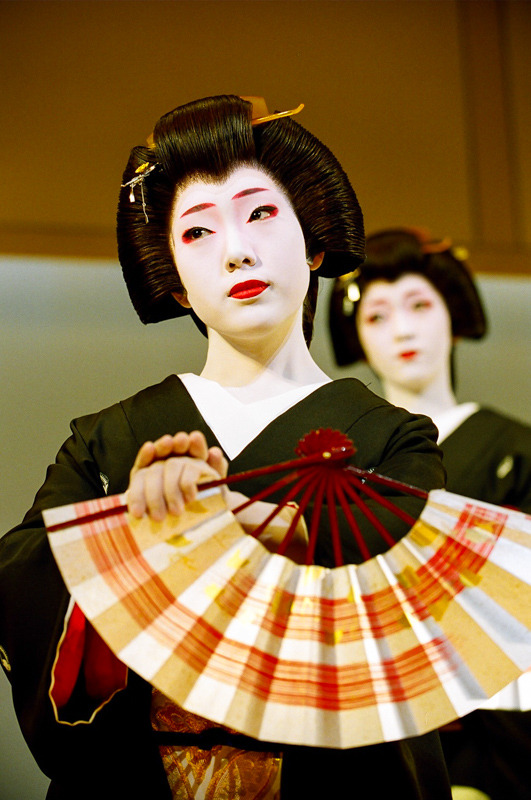
The Geisha Fukunami in Mizuekai
116 notes
·
View notes
Note
Do you know of any current Gion Kobu okasan or geiko who were around when Mineko Iwasaki was active or were students of Inoue Yachio IV?
There are still some! Yachiyo Inoue IV didn't officially retire the 2000s, so all geiko who debuted before then were her students. They include Satomi, Mamezuru, Sonomi, Mameka, Mamechizu, Koman, Korin, Kokimi, Takazuru, Fukunami, Terutoyo, Mamehiro, Mameya, Fukue, Yoshimame, Fukuha, and Tomichiyo for active geiko and Katsuji, Kofumi, Kohisa, Kumiko, Mameji, Mayuko, Tamakazu, and Yoshiju for okasan ^^
13 notes
·
View notes
Text

September 2018: Geiko Mikako (Nishimura Okiya) and Maiko Mameyui (Ninben Okiya) of Gion Kobu performing at an ozashikii,w hile Jikata Geiko Fukunami (Mikami Okiya) plays the shamisen and sings.
Source: 夏原 陽平 on Instagram
#mikako#mameyui#fukunami#gion kobu#kimono#hikizuri#furisode#susohiki#kosode#obi#darari obi#oshiroi#makeup#hair#hairstyle#maezashi#kanzashi#daikin#shidare kanzashi#comb#kushi#hairpin#hair ornament#geisha#maiko#geigi#geiko#nishimura okiya#ninben okiya#mikami okiya
62 notes
·
View notes
Note
Dear Myloko, can you tell anything about Miyagawacho Takemoto? I saw a rather awful docu from 2003 "an insight into japan's modern geisha", featuring Fukuume, Fukunami and the okami. It is said she is around 30 yrs old and was a maiko herself (debuted mid to late 80s I guess). Curious what her geimei might have been. You can check it out on youtube yourself. But be warned. It is cringey and if customers are really like this - poor Maiko.
Takemoto unfortunately hasn't had an active maiko or geiko in nearly a decade, although I'm not too sure why as it seems like not so long ago that they had some of the most popular geimaiko around. I have seen said "documentary" and yes, it's very, very cringey. I'm not 100% sure on the geimei of the okasan, but I think she may have been Fukuyo (ふく代) ^^
8 notes
·
View notes
Note
For the anon asking Takemoto's okaasan name her name was Fukusome. Anothe jikata who was a maiko is Fukunami in Gion. I imagine Sonomi acts as jikata now.
Fukunami was a natori dancer before she became a jikata geiko, just like Yoshimame and others have done, so she didn't debut directly to become a jikata geiko. Sonomi is still dancing ^^
6 notes
·
View notes
Text
Kyōmai
An event of legendary proportions, the Kyōmai is an event that’s seldom been staged over the years, with the last one taking place 19 years ago! Unlike a normal odori, this one takes place at the National Theatre in Tokyo and features the masters of Inoue Kyōmai together on stage. It is one of the rare instances where Yachiyo Inoue will dance in public, and her pieces are always the highlight of the event. Also unlike odori, each performance features different pieces, so you could see all 3 of them and be treated to a new experience!
Kyōmai will be taking place on November 29th and 30th at the National Theatre in Tokyo.
November 29th, 3pm
Piece 1: Kyō No Shiki (京の四季) - The Four Seasons of Kyoto
Dancers: Koeri (小衿), Katsuhana (佳つ花), Mamekinu (まめ衣), Mitsuki (美月), Kohana (小花), Tomoko (朋子), Konami (小なみ), and Mametama (豆珠).
Piece 2: Ashikari (芦刈) - Reed Cutting
Dancer: Inoue Yoko (井上葉子)
Piece 3: Kayō Kami (通う神) - Attendants of The Gods
Dancers: Inoue Takazuru (井上孝鶴) and Inoue Fukue (井上フク愛)
Piece 4: Matsu No Hagoromo (松羽衣) - Hagoromo In The Pines
Dancers:
Fisherman (漁夫): Inoue Terutoyo (井上照豊)
Heavenly Maiden (天人): Inoue Mamechizu (井上豆千鶴)
Piece 5: Azusa (梓) - The Spider Woman
Dancer: Inoue Mamezuru (井上まめ鶴)
Piece 6: Mitsumen Wankyū (三つ面椀久) - The Three Masks of Wankyū
Dancers:
Wankyū (椀久): Inoue Yachiyo (井上八千代)
Omōru (面売): Inoue Yasuko (井上安寿子)
Piece 7: Kuruwa No Nigiwai (廓の賑) - Pieces of The Flourishing District
Pieces: Shichifukujin (七福神) - The Seven Lucky Gods and Shakkyō (石橋) - Stone Bridge
Performers: Mamezuru (まめ鶴), Koman (小萬), Sonomi (そ乃美), Takazuru (孝鶴), Mameka (豆花), Korin (小りん), Fukue (フク愛), Mamechizu (豆千鶴), Terutoyo (照豊), Fukuha (福葉), Mameya (まめ弥), Kokimi (小喜美), Kogiku (小菊), Yukako (有佳子), Ichiyuri (市有里), and Kosen (小扇).
Fue: Mamesuzu (まめ鈴)
Taiko: Satomi (里美) and Mao (真生)
Singers: Komasu (小ます), Komomo (小桃), Yukizono (幸苑), Danka (だん香), and Yoshimame (芳豆)
Shamisen: Emiji (恵美二), Danyū (だん祐), Masuho (ます穂), Kimizuru (君鶴), and Mahori (まほ璃)
November 30th, 11am
Piece 1: Kyō No Shiki (京の四季) - The Four Seasons of Kyoto
Dancers: Koeri (小衿), Katsuhana (佳つ花), Mamekinu (まめ衣), Mitsuki (美月), Kohana (小花), Tomoko (朋子), Konami (小なみ), and Mametama (豆珠)
Piece 2: Mizugakami (水鏡) - Reflection of Water
Dancers: Inoue Korin (井上小りん) and Inoue Mameryō (井上豆涼)
Piece 3: Yumi Nagashi Monogatari (弓流し物語) - Tale of The Arrow Festival
Dancer: Inoue Koman (井上小萬)
Piece 4: Masazuki (正月) - New Year
Dancers: Inoue Mameka (井上豆花), Inoue Fukue (井上フク愛), Inoue Mamechizu (井上豆千鶴), and Inoue Terutoyo (井上照豊)
Piece 5: Chitose No Haru (千歳の春) - 1,000 Years of Spring
Dancer: Inoue Kazue (井上和枝)
Piece 6: Mitsumen Wankyū (三つ面椀久) - The Three Masks of Wankyū
Dancers:
Wankyū (椀久): Inoue Yachiyo (井上八千代)
Omouru (面売): Inoue Yasuko (井上安寿子)
Piece 7: Jūnitsuki (十二月) - Twelve Months
Dancers: Inoue Fukuha (井上福葉), Inoue Satomi (井上里美), Inoue Mameya (井上まめ弥), Inoue Kokimi (井上小喜美), Inoue Kogiku (井上小菊), Inoue Mamesuzu (井上まめ鈴), Inoue Mihoko (井上美帆子), Inoue Koai (井上小愛), Inoue Mao (井上真生), Inoue Yukako (井上有佳子), Inoue Makiko (井上槇子), Inoue Ichiyuri (井上市有里), Inoue Koyō (井上小耀), Inoue Kosen (井上小扇), and Inoue Sayaka (井上紗矢佳).
November 30th, 3pm
Piece 1: Manzai (萬歳) - 10,000 Years
Dancers: Kohana (小花), Tomoko (朋子), Konami (小なみ), Mametama (豆珠), Tatsuha (多都葉), Yuriha (ゆり葉), Mamesaya (豆沙弥), and Katsuharu (佳つ春).
Piece 2: Sangoku Ichi (三国一) - Unparalleled In Asia
Dancers: Inoue Fukuha (井上福葉) and Inoue Satomi (井上里美)
Piece 3: Toribe Yama (鳥辺山) - Mount Toribe
Dancers:
Osome (お染): Inoue Mamehiro (井上豆弘)
Hankurō (半九郎): Inoue Mameka (井上豆花)
Piece 4: Shin Kyō No Shiki (新京の四季) - New Four Seasons of Kyoto
Dancers: Inoue Sonomi (井上そ乃美), Inoue Mameya (井上まめ弥), Inoue Kokimi (井上小喜美), Koeri (小衿), Katsuhana (佳つ花), Mamekinu (まめ衣), and Mitsuki (美月).
Piece 5: Shino (信乃) - Your Fidelity
Dancer: Inoue Yasuko (井上安寿子)
Piece 6: Mushi No Ne (虫の音) - The Sound of Insects
Dancer: Inoue Yachiyo (井上八千代)
Piece 7: Kuruwa No Nigiwai (廓の賑) - Pieces of The Flourishing District
Pieces: Shichifukujin (七福神) - The Seven Lucky Gods and Hana Zukushi (花づくし) - Many Flowers
Performers: Mamezuru (まめ鶴), Koman (小萬), Sonomi (そ乃美), Mamehiro (豆弘), Takazuru (孝鶴), Mameka (豆花), Korin (小りん), Fukue (フク愛), Terutoyo (照豊), Fukuha (福葉), Satomi (里美), Mameya (まめ弥), Kokimi (小喜美), Kogiku (小菊), Mihoko (美帆子), Koai (小愛), Yukako (有佳子), Makiko (槇子), Ichiyuri (市有里), Koyō (小耀), Kosen (小扇), and Sayaka (紗矢佳).
Fue: Mamesuzu (まめ鈴)
Taiko: Mao (真生), Masaki (真咲), and Mameroku (豆六)
Singers: Komasu (小ます), Komomo (小桃), Masuho (ます穂), Danka (だん香), Yukizono (幸苑), and Danmitsu (だん満)
Shamisen: Emiji (恵美二), Danyū (だん祐), Kimizuru (君鶴), Fukunami (福奈美), Mahori (まほ璃), and Emino (恵美乃)
Jikata Performers
Gion Kobu: Komasu (小ます), Emiji (恵美二), Kimiya (君彌), Komomo (小桃), Danyū (だん祐), Mamechiyo (豆千代), Yoshimame (芳豆), Kimizuru (君鶴), Danka (だん香), Fukunami (福奈美), Masuho (ます穂), Yukizono (幸苑), Danmitsu (だん満), Mahori (まほ璃), Emino (恵美乃), Fumino (章乃), Satsuki (紗月), Mamesumi (豆純), Tomichiyo (斗美千代), Masaki (真咲), and Mameroku (豆六).
Outside Performers: Takemoto Komanosuke (竹本駒之助), Tsuruzawa Tsukazu ( 鶴澤津賀寿), Uji Haru (宇治はる), Uji Oto (宇治をと), Umetsuji Rie (梅辻理恵), Koike Noriko (小池典子), Kondo Masako (今藤政子), Kondo Tamami (今藤珠美), and Tōsha Rosen (藤舎呂船).
20 notes
·
View notes
Text
Onshūkai 温習会 - 2019
For the first time in decades the date for Onshūkai has changed!
Onshūkai will be held from October 3rd to 8th at the Kyoto Prefectural Center for Arts and Culture at The Kyoto Prefectural University of Medicine.
Participants
Natori Geiko: Mamezuru (まめ鶴), Koman (小萬), Sonomi (そ乃美). Mamehiro )(豆弘), Takazuru (孝鶴), Mameka (豆花), Korin (小りん), Fukue (フク愛), Mamechizu (豆千鶴), Terutoyo (照豊), Mameryō (豆涼), Fukuha (福葉), Satomi (里美), Mameya (まめ弥), Kokimi (小喜美), Kogiku (小菊), Mamesuzu (まめ鈴), Koai (小愛), Mihoko (美帆子), Mao (真生), Yukako (有佳子), Makiko (槇子), Ichiyuri (市有里), Koyō (小耀), Kosen (小扇), and Sayaka (紗矢佳).
Geiko: Mayuha (満友葉), Koyoshi (小芳), Mamemaru (豆まる), Fumino (章乃), Satsuki (紗月), Katsutomo (佳つ智), Masaki (真咲), Mameroku (���六), Katsuhina (佳つ雛), Eriha (恵里葉), Ichitomi (市十美), Katsue (佳つ江), Shino (紫乃), Ichiharu (市晴), Marika (茉利佳), Mamesumi (豆純), and Mameryū (まめ柳).
Jikata Geiko: Emiji (恵美二), Kimiya (君彌), Komomo (小桃), Danyū (だん祐), Mamechiyo (豆千代), Yoshimame (芳豆), Kimizuru (君鶴), Danka (だん香), Fukunami (福奈美), Masuho (ます穂), Yukizono (幸苑), Danmitsu (だん満), Mahori (まほ璃), and Emino (恵美乃).
Maiko: Mameharu (まめ春), Koeri (小衿), Katsuhana (佳つ花), Mamekinu (まめ衣), Mitsuki (美月), Tomoko (朋子), Kohana (小花), Konami (小なみ), Mametama (豆珠), Tatsuha (多都葉), Yuriha (ゆり葉), Mamesaya (豆沙弥), Katsuharu (佳つ春), Katsumomo (佳つ桃), Mizuno (瑞乃), Mameyo (豆誉), Nanoha (菜乃葉), Asuka (あす佳), Ichihiro (市紘), Konatsu (小奈都), Mariko (槇里子), Katsuemi (佳つ笑), Miwako (美羽子), Mameyui (豆結), Mameju (まめ樹), Suzuno (鈴乃), Kosumi (小純), Mameaya (まめ彩), Asako (亜佐子), and Masako (槇沙子).
Shift 1: October 3rd and 6th
Scene 1: Shiki San Basō (四季三葉草) - Three Grass/Leaves of The Four Seasons
Dancers
Sennen/1,000 Years (千歳): Mameya (まめ弥)
Okina/Old Man (翁): Mameryō (豆涼)
San Basō/Third Dance Expression (三番曳): Satomi (里美)
Joruri Singers
Kiyomoto Nobuhatsuma (清元延初磨), Kiyomoto Nobukiyoe (清元延清恵), and Yoshimame (芳豆)
Shamisen
Kiyomoto () and Emiji (恵美二)
High Pitch Shamisen
Kimiya (君彌)
Scene 2: Hime Sanja (姫三社) - Three Shrine Princesses
Dancers
Mizuno (瑞乃), Katsuharu (佳つ春), Konatsu (小奈都), Miwako (美羽子), Mameyo (豆誉), and Mameyui (豆結)
Singers
Kimiya (君彌), Danka (だん香), and Danmitsu (だん満)
Shamisen
Masuho (ます穂), Yukizono (幸苑), and Mahori (まほ璃)
Scene 3: Yuki Tsuki Hana (雪月花) - Snow Moon Flower
Part 1: Yuki (雪) - Snow
Dancers
Chūbei (忠兵衛): Mamesuzu (まめ鈴)
Umegawa (梅川): Ichiyuri (市有里)
Singers
Komomo (小桃) and Masuho (ます穂)
Shamisen
Danyū (だん祐) and Fukunami (福奈美)
Part 2: Tsuki (月) - Moon
Dancer
Mamechizu (豆千鶴)
Joruri Performers
Mamechiyo (豆千代) and Danka (だん香)
Shamisen
Emiji (恵美二) and Kimizuru (君鶴)
Part 3: Hana (花) - Flower
Dancers
Yukiko/Snow Child (雪子): Mihoko (美帆子)
Kōko/Happiness Child (幸子): Koyō (小耀)
Miyoko/Mysterious Child (妙子): Makiko (槇子)
Joruri Performers
Uji Haru (宇治はる) and Uji Shiho (宇治しほ)
Shamisen
Uji Oto (宇治をと) and Uji Han (宇治はん)
Scene 4: Yukari No Tsuki (由縁の月) : Acquaintance of The Moon
Dancer
Mamezuru (まめ鶴)
Musicians
Komasu (小ます), Danyū (だん祐), Masuho (ます穂), and Yukizono (幸苑)
Scene 5: Musume Dojoji Yori (娘道成寺より) - An Excerpt From Musume Dojoji
Dancers
Geiko (芸妓): Fumino (章乃), Satsuki (紗月), Mameroku (豆六), and Katsutomo (佳つ智)
Maiko (舞妓): Tomoko (朋子), Yuriha (ゆり葉), Mametama (豆珠), Mameharu (まめ春), Tatsuha (多都葉), and Mitsuki (美月)
Singers
Komomo (小桃), Danka (だん香), and Yukizono (幸苑)
Shamisen
Danyū (だん祐), Kimizuru (君鶴), and Kogiku (小菊)
Shift 2: October 4th and 7th
Scene 1: Hime Sanja (姫三社) - Three Shrine Princesses
Dancers
Katsuemi (佳つ笑), Katsumomo (佳つ桃), Ichihiro (市紘), Mariko (槇里子), Nanoha (菜乃葉), and Asuka (あす佳)
Singers
Kimiya (君彌), Danka (だん香), and Danmitsu (だん満)
Shamisen
Masuho (ます穂), Yukizono (幸苑), and Mahori (まほ璃)
Scene 2: Kiku No Sakazuki (菊の盃) - Chrysanthemum Sake Cup
Dancers
Mameka (豆花), Fukue (フク愛), and Terutoyo (照豊)
Joruri Performers
Mamechiyo (豆千代), Fukunami (福奈美), and Emino (恵美乃)
Shamisen
Emiji (恵美二), Tokiwazu Mitsumi (常磐津三都貴), and Kimizuru (君鶴)
Scene 3: Hōshō (老松) - Old Pine Tree
Singers
Komomo (小桃), Mamechiyo (豆千代), Fukunami (福奈美), and Emino (恵美乃)
Shamisen
Masuho (ます穂), Kimizuru (君鶴), Mahori (まほ璃), and Danmitsu (だん満)
Fue
Makiko (槇子)
Kotsuzumi
Koyoshi (小芳), Mamemaru (豆まる), and Sonomi (そ乃美)
Otsuzumi
Yukako (有佳子)
Taiko
Mao (真生)
Scene 4: Yukari No Tsuki (由縁の月) : Acquaintance of The Moon
Dancer
Koman (小萬)
Musicians
Komasu (小ます), Danyū (だん祐), Masuho (ます穂), and Yukizono (幸苑)
Scene 5: Suki No Otaue (主基の御田植) - The Rice Planting Festival
Dancers
Tanushi/Main Rice Planter (田主): Mayuha (満友葉)
Saotome/Young Rice Planters (早乙女): Shino (紫乃), Katsue (佳つ江), Mamesumi (豆純), Marika (茉利佳), Eriha (恵里葉), Ichiharu (市晴), Mameryū (まめ柳), and Ichitomi (市十美)
Singers
Mamechiyo (豆千代), Yukizono (幸苑), and Yoshimame (芳豆)
Shamisen
Danyū (だん祐), Kimizuru (君鶴), and Emino (恵美乃)
Shift 3: October 5th and 8th
Scene 1: Shiki San Basō (四季三葉草) - Three Grass/Leaves of The Four Seasons
Dancers
Sennen/1,000 Years (千歳): Kogiku (小菊)
Okina/Old Man (翁): Kokimi (小喜美)
San Basō/Third Dance Expression (三番曳): Fukuha (福葉)
Joruri Singers
Kiyomoto Nobuhatsuma (清元延初磨), Kiyomoto Nobukiyoe (清元延清恵), and Danka (だん香)
Shamisen
Kiyomoto Shiba (清元紫葉) and Emino (恵美乃)
High Pitch Shamisen
Kimizuru (君鶴)
Scene 2: Momiji Gari (紅葉売) - Selling Red Maple Leaves
Dancers
Mameaya (まめ彩), Suzuno (鈴乃), Kosumi (小純), Masako (槇沙子), Mameju (まめ樹), and Asako (亜佐子)
Singers
Yukizono (幸苑) and Emino (恵美乃)
Shamisen
Komomo (小桃), Fukunami (福奈美), Fumino (章乃), and Satsuki (紗月)
Scene 3: Yuki Tsuki Hana (雪月花) - Snow Moon Flower
Part 1: Yuki (雪) - Snow
Dancers
Chūbei (忠兵衛): Mao (真生)
Umegawa (梅川): Kosen (小扇)
Singers
Komomo (小桃) and Masuho (ます穂)
Shamisen
Danyū (だん祐) and Fukunami (福奈美)
Part 2: Tsuki (月) - Moon
Dancer
Sonomi (そ乃美)
Joruri Performers
Mamechiyo (豆千代) and Yoshimame (芳豆)
Shamisen
Emiji (恵美二) and Kimizuru (君鶴)
Part 3: Hana (花) - Flower
Dancers
Yukiko/Snow Child (雪子): Sayaka (紗矢佳)
Kōko/Happiness Child (幸子): Yukako (有佳子)
Miyoko/Mysterious Child (妙子): Koai (小愛)
Joruri Performers
Uji Haru (宇治はる) and Uji Shiho (宇治しほ)
Shamisen
Uji Oto (宇治をと) and Uji Han (宇治はん)
Scene 4: Kiku No Sakazuki (菊の盃) - Chrysanthemum Sake Cup
Dancers
Mamehiro (豆弘), Takazuru (孝鶴), and Korin (小りん)
Joruri Performers
Mamechiyo (豆千代), Yukizono (幸苑), and Emino (恵美乃)
Shamisen
Emiji (恵美二), Tokiwazu Mitsumi (常磐津三都貴), and Komomo (小桃)
Scene 5: Musume Dojoji Yori (娘道成寺より) - An Excerpt From Musume Dojoji
Dancers
Geiko (芸妓): Koyoshi (小芳), Mamemaru (豆まる), Masaki (真咲), and Katsuhina (佳つ雛)
Maiko (舞妓): Konami (小なみ), Mamekinu (まめ衣), Mamesaya (豆沙弥), Kohana (小花), Koeri (小衿), and Katsuhana (佳つ花)
Singers
Komomo (小桃), Yukizono (幸苑), and Danmitsu (だん満)
Shamisen
Danyū (だん祐), Kimizuru (君鶴), and Koyō (小耀).
Notes About Scenes
Shiki San Basō (四季三葉草) - Three Grass/Leaves of The Four Seasons
This one is a bit complicated as it’s taken from a very old piece that has multiple parts to it. Each part is portrayed by the specific dancer (Sennen, Okina, and San Basō). This piece traditionally opens the bunraku puppet shows, so think of it as the opening warm up act ^^
Hime Sanja (姫三社) - Three Shrine Princesses
I’ve covered this one before, and you can read my breakdown here.
Momiji Gari (紅葉売) - Selling Red Maple Leaves
A very simple piece that’s danced at ozashiki in the autumn, it’s about a woman selling maple leaves.
Yuki Tsuki Hana (雪月花) - Snow Moon Flower
This is another three part dance, although I can’t find much information on either part.
Kiku No Sakazuki (菊の盃) - Chrysanthemum Sake Cup
Based on a poem by Matsuo Basho, it is the story of a chrysanthemum cup whose imagery brings to mind that of a waterfall. I have no idea how this will be translated into dance though.
Yukari No Tsuki (由縁の月) : Acquaintance of The Moon
This one tells the story of a courtesan who thinks back on her lover and the time when she had to part from them, which lead her through a marshy field while the moon was bright in the sky. She does so while gazing on the moon in the present.
Hōshō (老松) - Old Pine Tree
This piece is used purely as a vocal intermission and tells the story of an old pine tree.
Suki No Otaue (主基の御田植) - The Rice Planting Festival
This piece is based on a real event that takes place annually in Kagawa and features brightly dressed participants who plant the first rice of the year while other participants dance around the field to keep things extra lively!
Musume Dojoji Yori (娘道成寺より) - An Excerpt From Musume Dojoji
Musume Dojoji is a very famous kabuki play about the dance of a maiden while at Dojoji Shrine. It’s very lively and playful, so it will be interesting to see how the Inoue School interprets it, especially with so many dancers on stage!
9 notes
·
View notes
